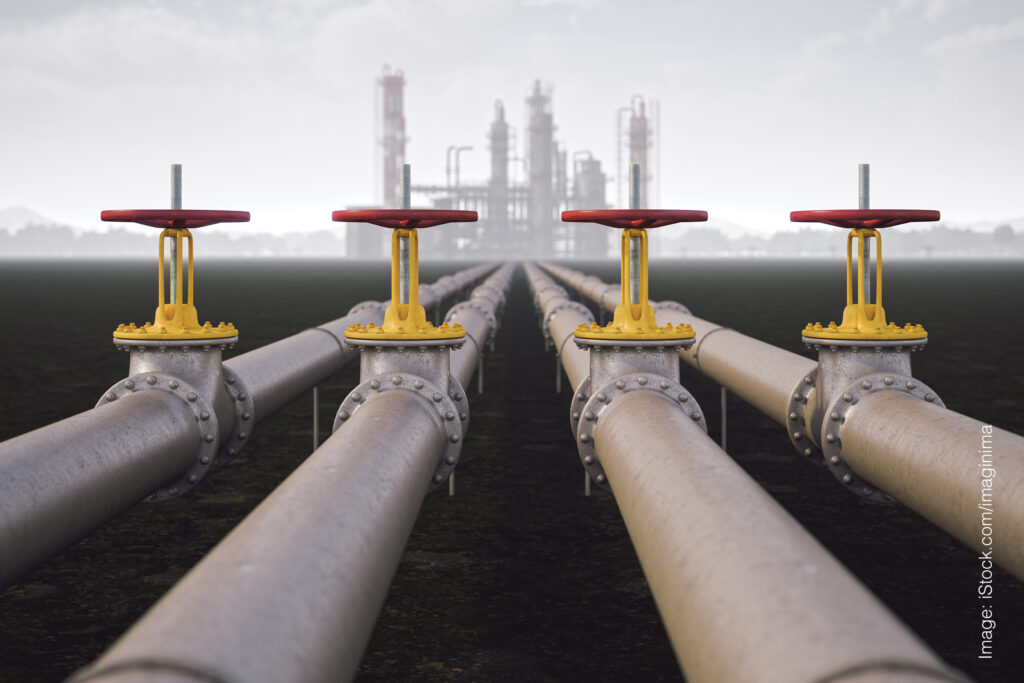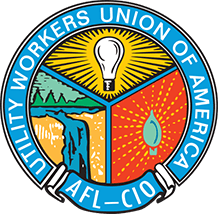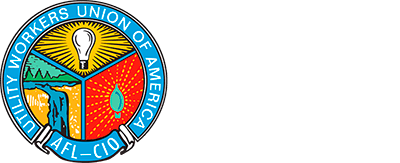
Natural gas infrastructure has long been a cornerstone of American industrial power, with over 2.7 million miles of pipelines serving 189 million Americans. For UWUA members responsible for maintaining and operating this vast network, the industry has historically provided stable, well-paying union jobs. However, rapid technological advancements, aggressive decarbonization policies, and shifting market dynamics are reshaping the natural gas distribution landscape. These changes present both challenges and opportunities, requiring immediate attention and mobilization from local unions to ensure a fair transition for workers.
The Changing Energy Landscape
While some industry voices argue that natural gas will remain a dominant energy source for decades, current market and policy trends indicate that the transition is unfolding faster than anticipated. Chicago’s gas pipeline replacement program was recently put on pause, while Local 369 in Massachusetts had to fight back against a similar initiative last year. These moves signal a transition that may occur more rapidly than expected.
Jim Harrison, UWUA’s Director of Renewable Energies, likens the situation to “a frog in water,” warning that gradual policy changes may fundamentally alter the industry within the next five to six years — far sooner than expected. States and cities are already exploring strategies such as neighborhood transition plans and revised building codes to curb natural gas consumption. However, unions and utilities are responding by piloting technologies like Thermal Energy Networks (TENs) and hydrogen integration, which may help sustain employment while adapting to a lower-carbon future.
Multiple Pressures Converge
Rising Demand and Grid Constraints
U.S. electricity demand is projected to grow by 9% by 2028 and 18% by 2033, driven by building electrification, data centers, artificial intelligence (AI), and manufacturing growth. The North American Electric Reliability Corporation (NERC) has raised concerns about grid reliability, particularly regarding natural gas supply during extreme weather events.
Moses Rams, President of Connecticut Local 470-1, voices these concerns: “Transitioning to renewable energy is crucial, but the speed at which the state is moving could put us all at risk. Right now, a plan for rolling blackouts is already in place in case of a gas shortage. If this transition isn’t handled smoothly — a challenge the state has struggled with in the past — we could face serious reliability issues, especially during extreme weather.”
The current backlog of solar, wind, and battery storage projects seeking grid connection exceeds 2,600 gigawatts—more than twice the country’s existing generation capacity. Without modernization efforts, utilities are increasingly relying on fossil fuels, including natural gas, to meet demand.
Industrial Transition and Energy Demand
The U.S. steel industry — concentrated in Indiana, Illinois, Michigan, Ohio, and Pennsylvania — is under mounting pressure to decarbonize. Achieving this shift requires approximately 174 terawatt-hours annually — equivalent to the entire electricity output of Illinois in 2023. Transitioning away from coal-based steel production hinges on three primary alternatives: carbon capture, hydrogen-based ironmaking, and novel electrochemical methods, all of which require large-scale clean energy development.
Price Dynamics
The cost advantage that natural gas has long enjoyed may be eroding. As liquefied natural gas (LNG) export terminals come online in 2025 and 2026, domestic prices are expected to rise above inflation. Further increases in LNG exports, depending on federal energy policies, could accelerate the transition toward alternative energy sources. This means unions must engage in shaping energy affordability discussions while pushing for worker protections in shifting industries.
Policy Pressures
Major metropolitan areas where UWUA members work — including New York City, Boston, Philadelphia, Chicago, and Los Angeles — are implementing policies to reduce natural gas consumption. California’s SB-1222 mandates that gas utilities prioritize decarbonization while ensuring fair wages and job protections. Meanwhile, 26 states have passed “fuel choice” legislation to safeguard natural gas usage, yet the push for decarbonization persists.
Local 1-2 President Jim Shillitto highlights the practical implications: “New York City passed a law requiring electrification across the board. But Con Edison and other companies in the area aren’t abandoning the gas infrastructure; they’re committed to maintaining the system until if and when a full transition to renewables is achieved.”
Illinois has taken a different approach, and Local 18007 is actively pushing to lift the hold on Chicago’s infrastructure replacement program. “The Illinois Commerce Commission made an unprecedented decision to pause our pipeline replacement program after over a decade of steady progress — 15 years before its scheduled completion in 2040. This decision doesn’t just stall infrastructure upgrades — it puts public safety at risk. More leaks mean more hazards,” says Sean Gaurige, the local’s business manager.
New Opportunities Emerge
Despite the challenges, emerging technologies and infrastructure innovations offer UWUA members new opportunities to stay at the forefront of the energy sector:
- Thermal and Geothermal Energy Networks: Major UWUA employers, including ConEd, Eversource, and National Grid, have launched pilot projects focused on Thermal Energy Networks (TENs), which use shared underground infrastructure for efficient energy distribution (see next page). With support from the Department of Energy, these technologies have the potential to scale nationwide, creating new job opportunities for skilled utility workers.
- Hydrogen Integration in Gas Distribution: UWUA locals in California and Ohio are actively participating in hydrogen blending projects, testing the feasibility of incorporating hydrogen into existing pipelines. Ensuring union involvement in these pilot programs will be critical to protecting jobs in the evolving energy economy.
By engaging in these emerging fields, UWUA members can help shape the future of energy while securing long-term job stability.
The Imperative for Union Action
To safeguard the future of natural gas jobs and ensure a just transition, UWUA locals must take proactive steps:
1. Engage with employers on new gas technologies and their impact on job classifications.
2. Monitor and participate in gas main replacement discussions to secure necessary infrastructure investments.
3. Form coalitions with stakeholders to influence state and local energy policies, as demonstrated by successful advocacy efforts in Illinois, Massachusetts and elsewhere.
4. Advocate for worker protections in emerging technologies such as TENs, hydrogen, and nuclear energy.
5. Ensure that workforce transitions include comprehensive training programs to protect jobs and wages.
6. Stay informed about energy market trends affecting natural gas demand and pricing to anticipate industry shifts.
Looking Forward
The natural gas sector stands at a critical juncture. While infrastructure remains essential, the industry is evolving rapidly. The ability of UWUA locals to shape this transition — rather than merely react to it — will determine their success.
For UWUA members, the call to action is clear: mobilization must begin now. By engaging in policy discussions, forming alliances, and advocating for worker interests, the union can actively shape the future rather than merely respond to change. “The first step is to contact your National Representative,” says Local 1-2’s Jim Shillitto. Your National Representative can connect you with experts at the National union such as Jim Harrison, Lee Anderson in governmental affairs, and Erin Bzymek in communications, who can help develop a strategy tailored to your local’s situation.
The future requires a multi-pronged approach: maintaining infrastructure safety, developing workforce skills for emerging technologies, and ensuring a just transition for union workers. In an era of unprecedented change in the energy sector, proactive union engagement has never been more critical.
Thermal Energy Networks Emerge as a Promising Path for Gas Utility Workers’ Future
As states advance ambitious decarbonization goals, thermal energy networks (TENs) are gaining traction as a key solution — reducing carbon emissions while offering gas utility workers a viable career transition. These systems heat and cool entire neighborhoods through shared water pipe networks, utilizing infrastructure and skill sets remarkably similar to those of existing natural gas systems.
The transition is already underway, with multiple pilot projects launching in states where the UWUA has collective bargaining agreements. In New York, Con Edison is developing projects at Rockefeller Center and in a Chelsea development that combines office space and Housing Authority residential units. Massachusetts has seen significant progress, with Eversource’s 36-building network in Framingham becoming operational in June 2024.
New York’s Utility Thermal Energy Network and Jobs Act of 2022 exemplifies how states can prioritize workers in the clean energy transition. The legislation mandates that TEN projects maintain labor peace agreements with unions representing gas and electric utility employees. Importantly, the law ensures that workers affected by downsizing in gas transmission and distribution have first access to new positions in TEN operations and maintenance.
Local 1-2’s Jim Shillitto explains, “State law mandates that large utilities conduct geothermal pilot projects. Con Edison is currently testing viability through three projects in Mount Vernon, Chelsea, and Rockefeller Center. Part of the bill that mandates these projects specifically states that utility workers will be retrained to do that work.”
The similarities between TEN and natural gas infrastructure make this transition particularly practical. These systems often use comparable plastic piping and are installed at similar depths, allowing gas utility workers to apply their existing expertise to this new technology. As the New York legislation states, “The construction of thermal energy networks will utilize many of the same skills that the existing utility and building trades workforce already possess.”
Eversource’s successful Framingham network, which began connecting customers in August 2024, has demonstrated the technology’s viability even in extreme weather conditions. With a $7.8 million grant from the Department of Energy, the project is now expanding. “Eversource took a different approach in Framingham,” said UWUA Local 369 President Dan Leary. “They not only signed an agreement with the city to expand the project but also engaged with us and the Steelworkers. We’re ensuring that as geothermal expands into UWUA territory, our members will be the ones putting the pipes in the ground.”
The economic potential is substantial. A recent analysis by Synapse Energy Economics projects geothermal networks could generate up to $5.2 billion in savings in Massachusetts alone compared to alternative heating solutions. These savings could help fund building retrofits and system expansions, creating additional job opportunities for skilled utility workers.
Eight states have already passed legislation supporting utility construction of thermal energy networks, with several more expected to follow this year. This growing regulatory support, combined with the technology’s alignment with existing utility worker skill sets, positions TENs as a key component of a just transition for the utility workforce.
As the industry evolves, challenges remain — particularly regarding building retrofits and initial system costs. However, these challenges also present opportunities for workforce development as utilities and workers adapt to new roles. The experience gained from early projects is already leading to more efficient installations and reduced costs, suggesting a growing market for skilled workers in this field.
For UWUA gas workers, thermal energy networks represent more than just a new technology — they offer a bridge to the clean energy future. This transition values and preserves their essential expertise while contributing to critical climate goals, ensuring that utility workers remain at the heart of the evolving energy landscape.

